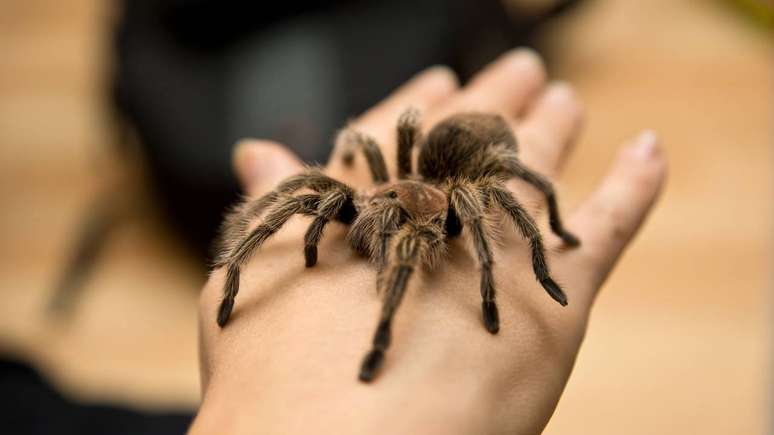Find out why tarantulas are kept as pets. Discover its benefits, curiosities and essential care for breeders
In recent years, the presence of the tarantula as a farm animal has attracted attention in several countries, including Brazil. These arachnids, previously seen only as wild species, began to occupy a unique space in homes and specialized collections. With their robust appearance, tarantulas demonstrate that, despite historical prejudices, they can become pets for lovers of exotic animals.
The search for information on tarantula breeding reflects a growing interest in the unusual animals. Whether out of curiosity about the behavior of these arachnids or for the possibility of contributing to the conservation of endangered species, more and more people decide to purchase tarantula specimens to raise in their homes, respecting environmental standards and legal requirements.
What motivates the choice of the tarantula as a farm animal?
The search for tarantulas as pets is often linked to a fascination with different animals. The maintenance of these arachnids reveals interesting aspects, including the low need for daily maintenance, since most species require sporadic feeding and less elaborate environments. Furthermore, controlled breeding allows the behavior and life cycle of these animals to be monitored, which is an educational experience for enthusiasts and researchers.
Another relevant factor is the ecological value associated with conservation. Captive breeding, when carried out in accordance with environmental agency guidelines, can help reduce illegal exploitation in the wild. Many breeders are dedicated to studying the reproduction and patterns of these species, expanding scientific knowledge on biodiversity and promoting sustainable practices in the sector.
How are pet tarantulas responsibly managed?
Managing tarantulas in domestic environments involves simple but essential precautions for the animal’s well-being. Keeping the container clean, controlling humidity, providing hiding places and providing proper nutrition are among the main responsibilities of breeders. Furthermore, it is essential to respect the needs of each species in terms of available space and adequate temperature.
- Environment: The aquarium or terrarium must be safe, ventilated and provide a place of refuge for insects.
- Food: Meals generally consist of live insects such as crickets, grubs and beetles.
- Hygiene: removing food residues and periodically changing the substrate prevents diseases.
- Monitoring: Observing signs of skin changes (ecdysis) and abnormal behavior is part of the routine.
Breeders dedicated to the in-depth study of tarantulas always seek knowledge from reliable sources, sharing information and advice in specialized communities. Compliance with legislation, such as compliance with environmental registers and permits, is a key part of managing within legal parameters in 2025.

What are the benefits and challenges of keeping tarantulas as pets?
Raising tarantulas offers benefits that go beyond entertainment. Close contact with these species promotes knowledge of nature and biological processes, promoting respect for wildlife. In educational programs, tarantulas are used to demystify the growing fear of arachnids and encourage environmental conservation.
However, there are important challenges, such as the need to clarify false information about the dangers and myths associated with these animals. Although not aggressive by nature, tarantulas require caution when handling to avoid risks to both the animal and people. Another point is long-term commitment, as some species can have a life expectancy of more than 15 years, requiring planning and responsibility on the part of guardians.
The trend in breeding tarantulas reflects changes in how wild animals are viewed and treated. The growth of the market for the responsible management of these arthropods demonstrates that, when there is information, interest and respect for animal welfare, it is possible to integrate new species into human daily life without causing damage to the ecosystem.
Source: Terra
Ben Stock is a lifestyle journalist and author at Gossipify. He writes about topics such as health, wellness, travel, food and home decor. He provides practical advice and inspiration to improve well-being, keeps readers up to date with latest lifestyle news and trends, known for his engaging writing style, in-depth analysis and unique perspectives.









